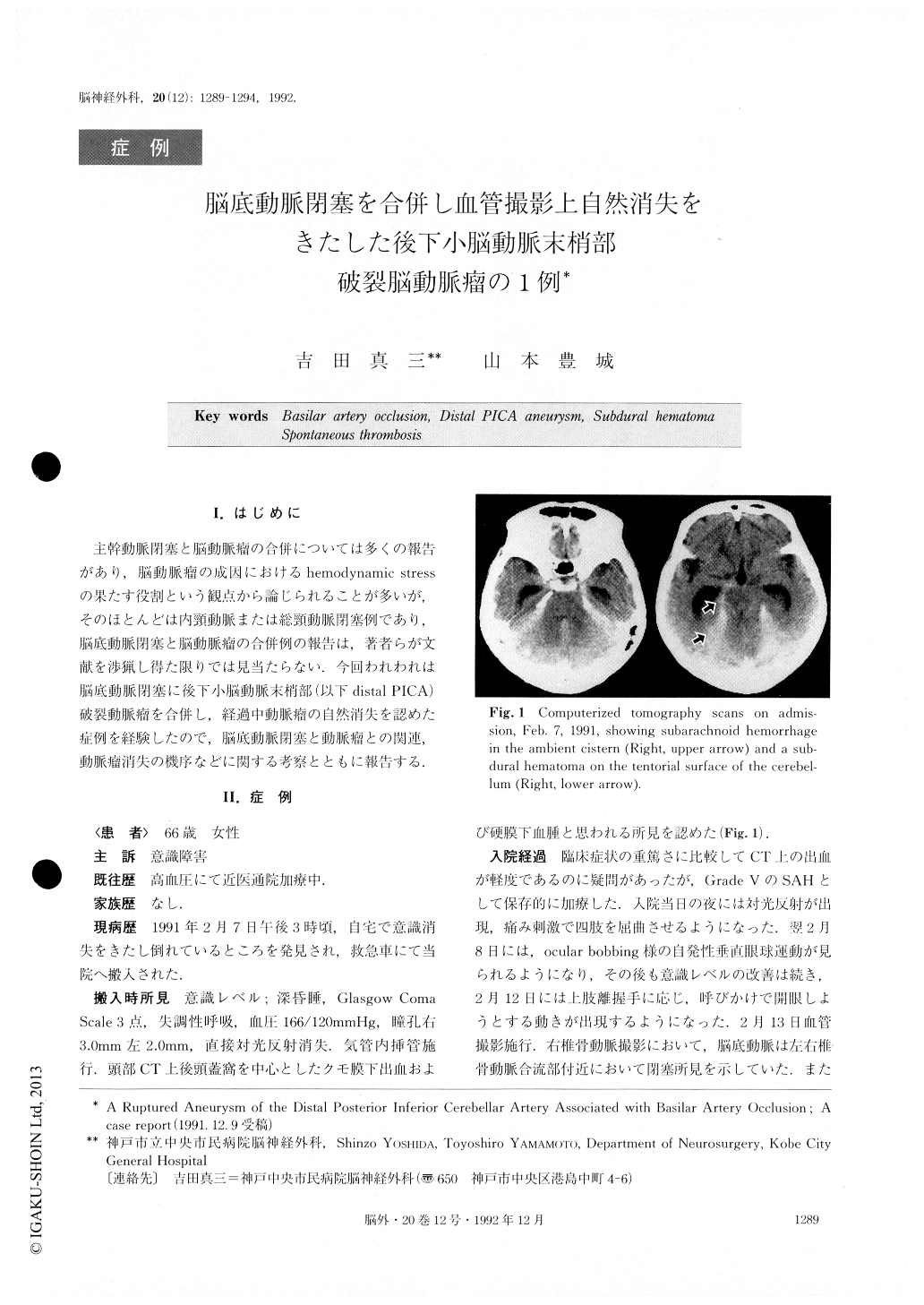Japanese
English
- 有料閲覧
- Abstract 文献概要
- 1ページ目 Look Inside
I.はじめに
主幹動脈閉塞と脳動脈瘤の合併については多くの報告があり,脳動脈瘤の成因におけるhemodynamic stressの果たす役割という観点から論じられることが多いが,そのほとんどは内頸動脈または総頸動脈閉塞例であり,脳底動脈閉塞と動脈瘤の合併例の報告は,著者らが文献を渉猟し得た限りでは見当たらない.今回われわれは脳底動脈閉塞に後下小脳動脈末梢部(以下distal PICA)破裂動脈瘤を合併し,経過中動脈瘤の自然消失を認めた症例を経験したので,脳底動脈閉塞と動脈瘤との関連,動脈瘤消失の機序などに関する考察とともに報告する.
We presented a case of a distal posterior inferior cere-bellar artery (PICA) aneurysm associated with basilar artery occlusion. A 66-year-old female was found uncon-scious at home and transferred to our hospital in a deep coma on February 9, 1991. Emergency CT scan revealed subarachnoid hemorrhage in the posterior fossa. She was treated conservatively because of her poor neurological status. The angiograms performed on February 13 showed occlusion of the basilar artery and a saccular aneurysm at the cortical branch of the PICA. The con-trast material remained in the aneurysm for a long time throughout the venous phase. The left vertebral artery was markedly hypoplastic. "Fhe patient improved re-markably after admission and became almost alert late inFebruary, althogh she still presented tetraparesis, dys-function of lower cranial nerves and other neurological signs linked with the brain stem. The unusual angio-graphical findings in this case prompted us to perform the examination again, expecting some angiographical changes. The angiograms taken on March 15 revealed spontaneous disappearance of the aneurysm, although the basilar artery occlusion remained unchanged. The authors discussed some problems involved in this case, including the relation between the aneurysm and the arterial occlusion, and the mechanism of spontaneous disappearance of the aneurysm.

Copyright © 1992, Igaku-Shoin Ltd. All rights reserved.


